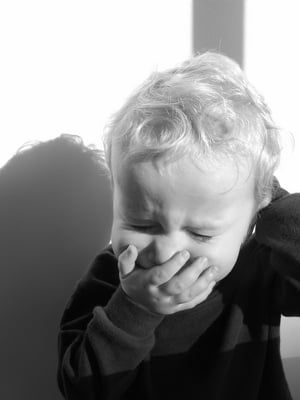There are many causes of bleeding in the digestive tract. But when digestive tract bleeding occurs, it occurs most often as a sign of another digestive problem rather than a disease itself. Some may be mild and often can be managed, while other causes of bleeding in the tract are life-threatening.
It is important to know where in the gastrointestinal tract bleeding occurs.
Bleeding can occur either on the upper or lower digestive tract. The upper digestive tract includes the esophagus, stomach and the first part of the small intestine, called duodenum. The lower digestive tract, on the other hand, includes the lower parts of the small intestine-the jejunum and ileum-and the large intestine including the anus.
Let us explore the different digestive problems that can cause bleeding in the tract.
As mentioned earlier, digestive bleeding can occur on the upper or lower digestive tract. Upper digestive tract bleeding may be caused by peptic ulcers, esophageal varices (enlarged veins), gastritis, and esophagitis. Sometimes, bleeding may be due to benign tumors or cancer of the esophagus, stomach or duodenum.
Peptic ulcers are sores in the inner lining of the stomach and sometimes the duodenum. The most common cause of peptic ulceration is infection with the microorganism Helicobacter pylori or more commonly known as H. pylori. The condition may also be caused by long-term use of NSAIDs (nonsteroidal anti-inflammatory drugs), such as ibuprofen and aspirin.
Esophageal varices are enlarged veins that rupture and cause massive bleeding in the lower end of the esophagus. The condition is often caused by a liver problem called cirrhosis.
Gastritis is the clinical term for the inflammation of the stomach. Several conditions can cause the stomach to become inflamed. Such digestive disorders include infections and Crohn’s disease. Sometimes, gastritis can be caused by long-term use of NSAIDs and injuries.
Esophagitis is the inflammation of the inner lining of the esophagus commonly caused by gastroesophageal reflux disease (GERD). In GERD, the muscle between the esophagus and stomach fail to close when it should. This failure to close then causes stomach contents including stomach acid to flow back in the esophagus. Stomach acid can irritate the lining of the esophagus, causing irritation and inflammation.
Bleeding on the lower digestive tract can be caused by diverticular disease wherein pouches form in the colon wall; colitis, which is the inflammation of the colon; hemorrhoids and anal fissures; abnormalities in the blood vessels of the intestine-angiodysplasia; and polyps or cancer. Polyps are benign growths (not cancer) that occur in the colon, which may lead to colon cancer. Colorectal cancer is cancerous and can occur in the colon or rectum.
A person experiencing symptoms, such as having bright red blood in vomit or vomit that looks like coffee grounds; stools that are black or tarry; and dark/bright red blood mixed with stool, should consult their doctor and have him or her check the cause of bleeding.
Having anemia, sudden loss of weight and sudden change in bowel movement may suggest a more severe condition. People experiencing these symptoms should definitely need consultation with a healthcare provider.
Sources:
Bleeding in the Digestive Tract (January 2010). Retrieved February 3, 2010 from http://digestive.niddk.nih.gov/ddiseases/pubs/bleeding/index.htm
Gastrointestinal Bleeding (January 2010). Retrieved February 3, 2010 from http://www.nlm.nih.gov/medlineplus/gastrointestinalbleeding.html


